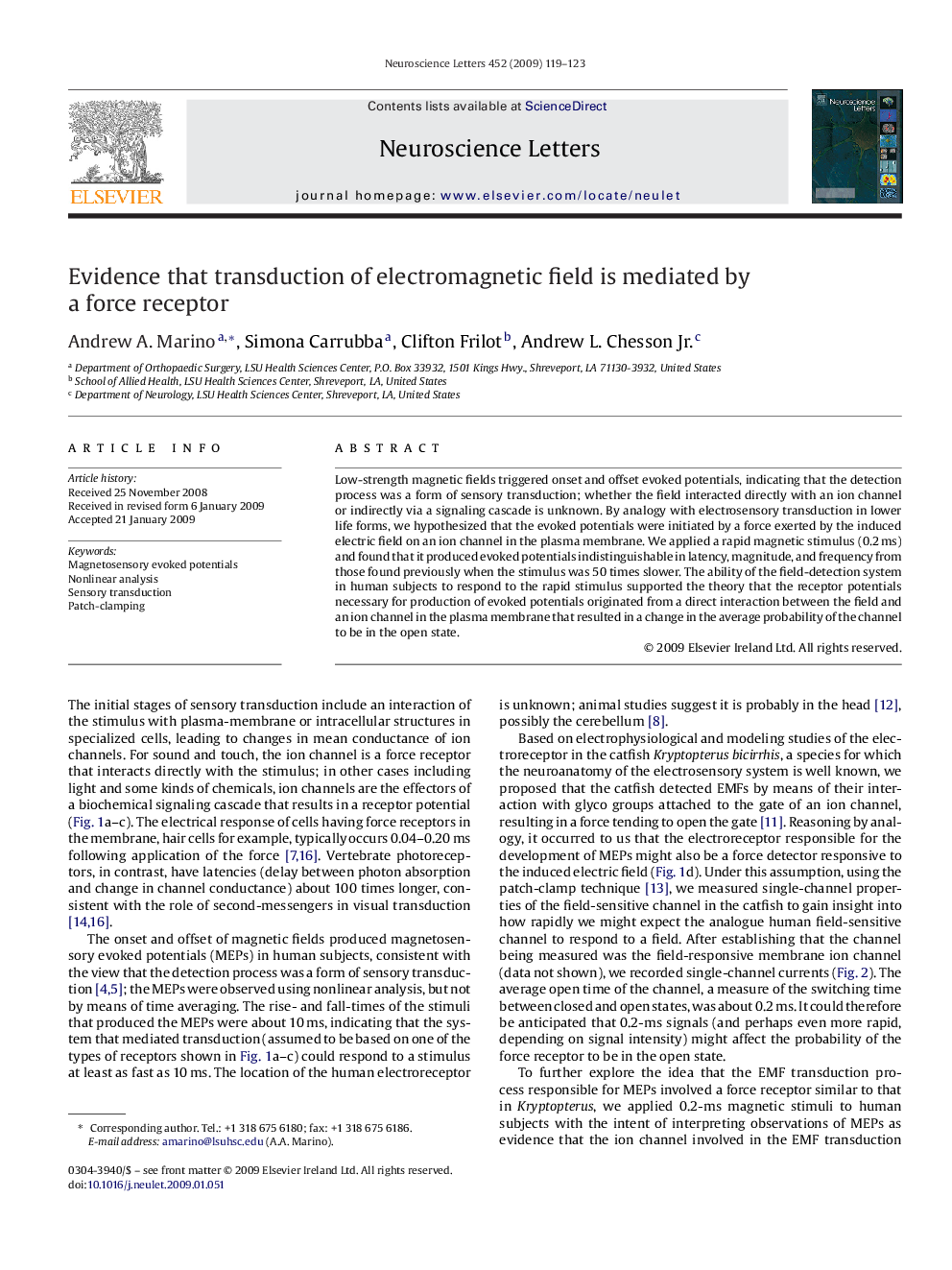| Article ID | Journal | Published Year | Pages | File Type |
|---|---|---|---|---|
| 6285558 | Neuroscience Letters | 2009 | 5 Pages |
Abstract
Low-strength magnetic fields triggered onset and offset evoked potentials, indicating that the detection process was a form of sensory transduction; whether the field interacted directly with an ion channel or indirectly via a signaling cascade is unknown. By analogy with electrosensory transduction in lower life forms, we hypothesized that the evoked potentials were initiated by a force exerted by the induced electric field on an ion channel in the plasma membrane. We applied a rapid magnetic stimulus (0.2Â ms) and found that it produced evoked potentials indistinguishable in latency, magnitude, and frequency from those found previously when the stimulus was 50 times slower. The ability of the field-detection system in human subjects to respond to the rapid stimulus supported the theory that the receptor potentials necessary for production of evoked potentials originated from a direct interaction between the field and an ion channel in the plasma membrane that resulted in a change in the average probability of the channel to be in the open state.
Related Topics
Life Sciences
Neuroscience
Neuroscience (General)
Authors
Andrew A. Marino, Simona Carrubba, Clifton Frilot, Andrew L. Jr.,
